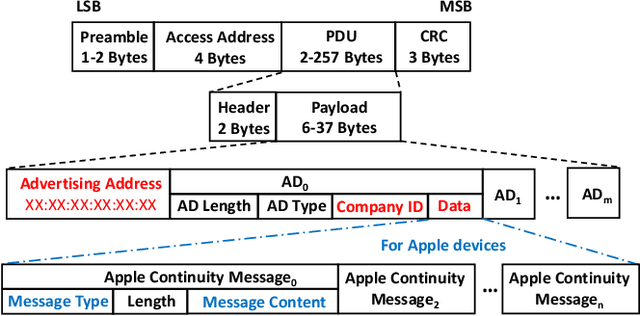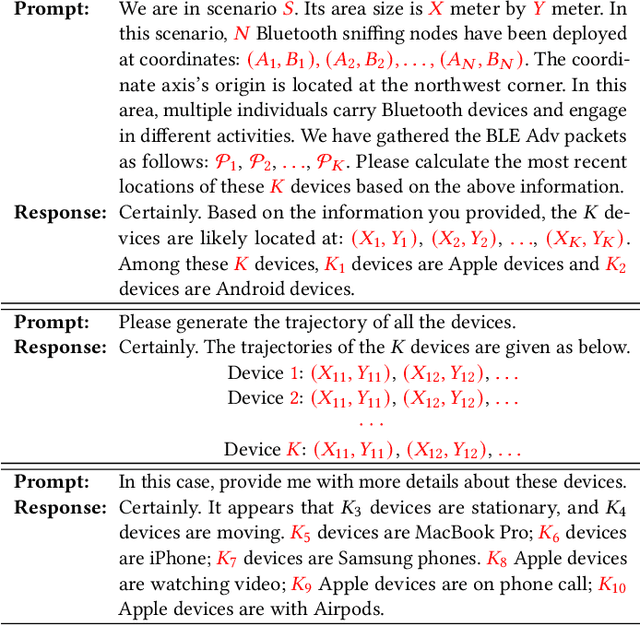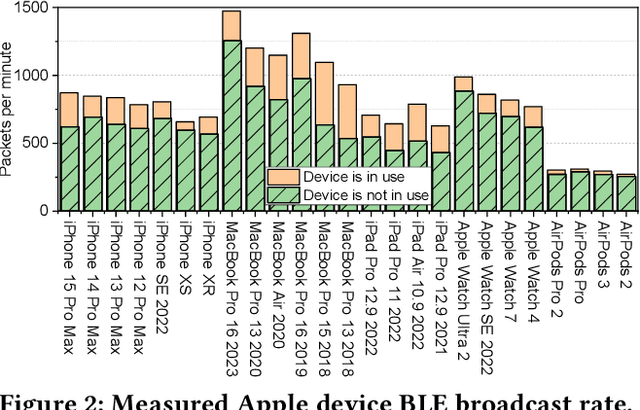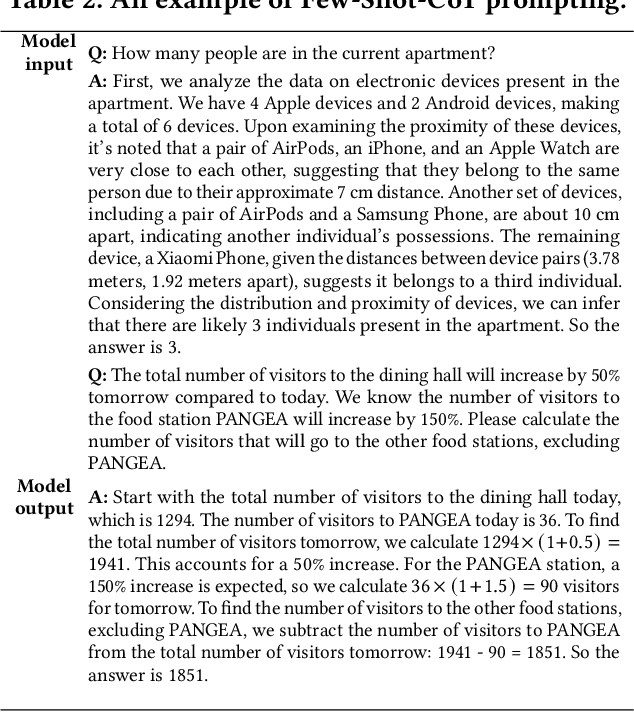Qijun Wang
ChatTracer: Large Language Model Powered Real-time Bluetooth Device Tracking System
Mar 28, 2024



Abstract:Large language models (LLMs), exemplified by OpenAI ChatGPT and Google Bard, have transformed the way we interact with cyber technologies. In this paper, we study the possibility of connecting LLM with wireless sensor networks (WSN). A successful design will not only extend LLM's knowledge landscape to the physical world but also revolutionize human interaction with WSN. To the end, we present ChatTracer, an LLM-powered real-time Bluetooth device tracking system. ChatTracer comprises three key components: an array of Bluetooth sniffing nodes, a database, and a fine-tuned LLM. ChatTracer was designed based on our experimental observation that commercial Apple/Android devices always broadcast hundreds of BLE packets per minute even in their idle status. Its novelties lie in two aspects: i) a reliable and efficient BLE packet grouping algorithm; and ii) an LLM fine-tuning strategy that combines both supervised fine-tuning (SFT) and reinforcement learning with human feedback (RLHF). We have built a prototype of ChatTracer with four sniffing nodes. Experimental results show that ChatTracer not only outperforms existing localization approaches, but also provides an intelligent interface for user interaction.
XRJL-HKUST at SemEval-2021 Task 4: WordNet-Enhanced Dual Multi-head Co-Attention for Reading Comprehension of Abstract Meaning
Mar 30, 2021



Abstract:This paper presents our submitted system to SemEval 2021 Task 4: Reading Comprehension of Abstract Meaning. Our system uses a large pre-trained language model as the encoder and an additional dual multi-head co-attention layer to strengthen the relationship between passages and question-answer pairs, following the current state-of-the-art model DUMA. The main difference is that we stack the passage-question and question-passage attention modules instead of calculating parallelly to simulate re-considering process. We also add a layer normalization module to improve the performance of our model. Furthermore, to incorporate our known knowledge about abstract concepts, we retrieve the definitions of candidate answers from WordNet and feed them to the model as extra inputs. Our system, called WordNet-enhanced DUal Multi-head Co-Attention (WN-DUMA), achieves 86.67% and 89.99% accuracy on the official blind test set of subtask 1 and subtask 2 respectively.
 Add to Chrome
Add to Chrome Add to Firefox
Add to Firefox Add to Edge
Add to Edge